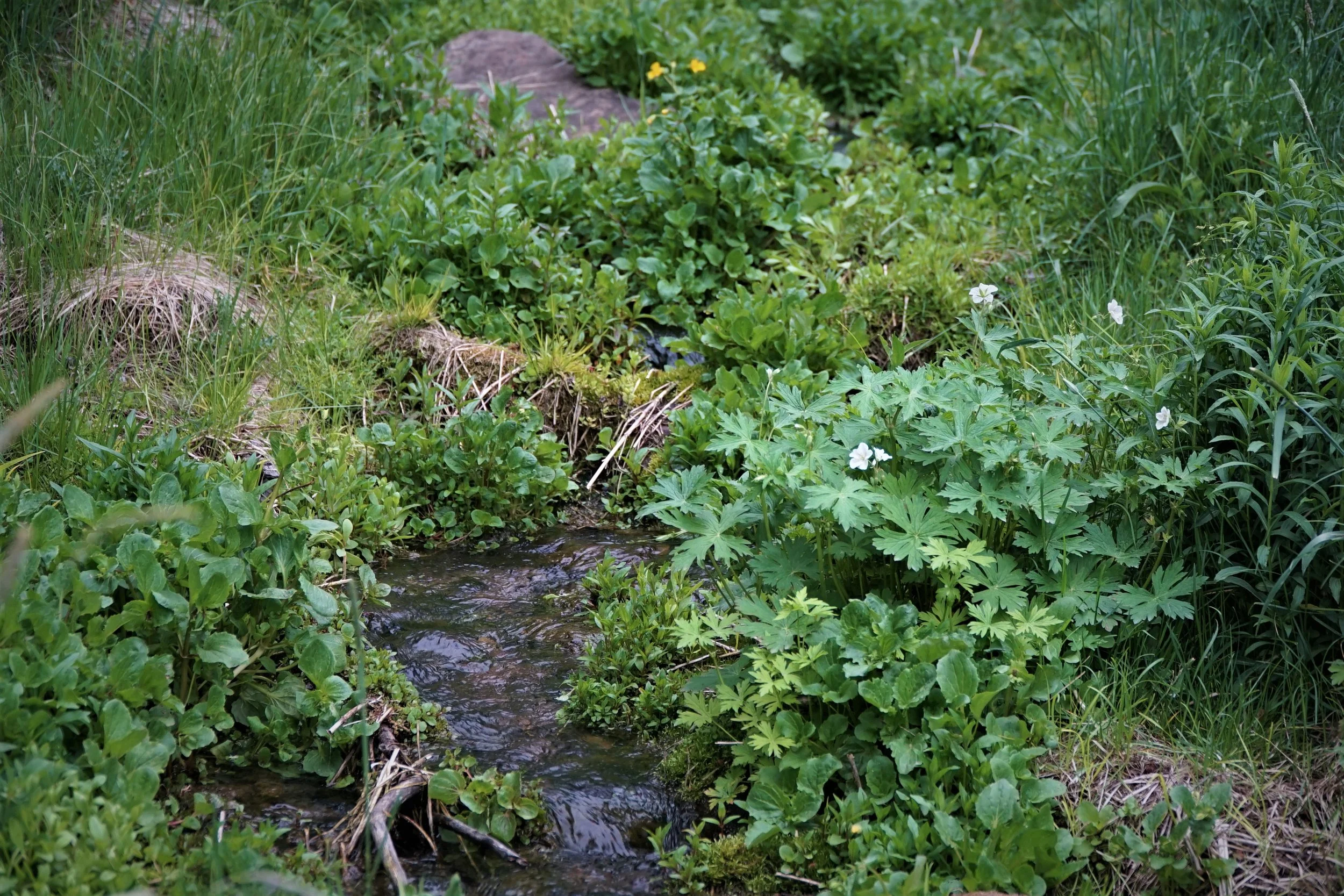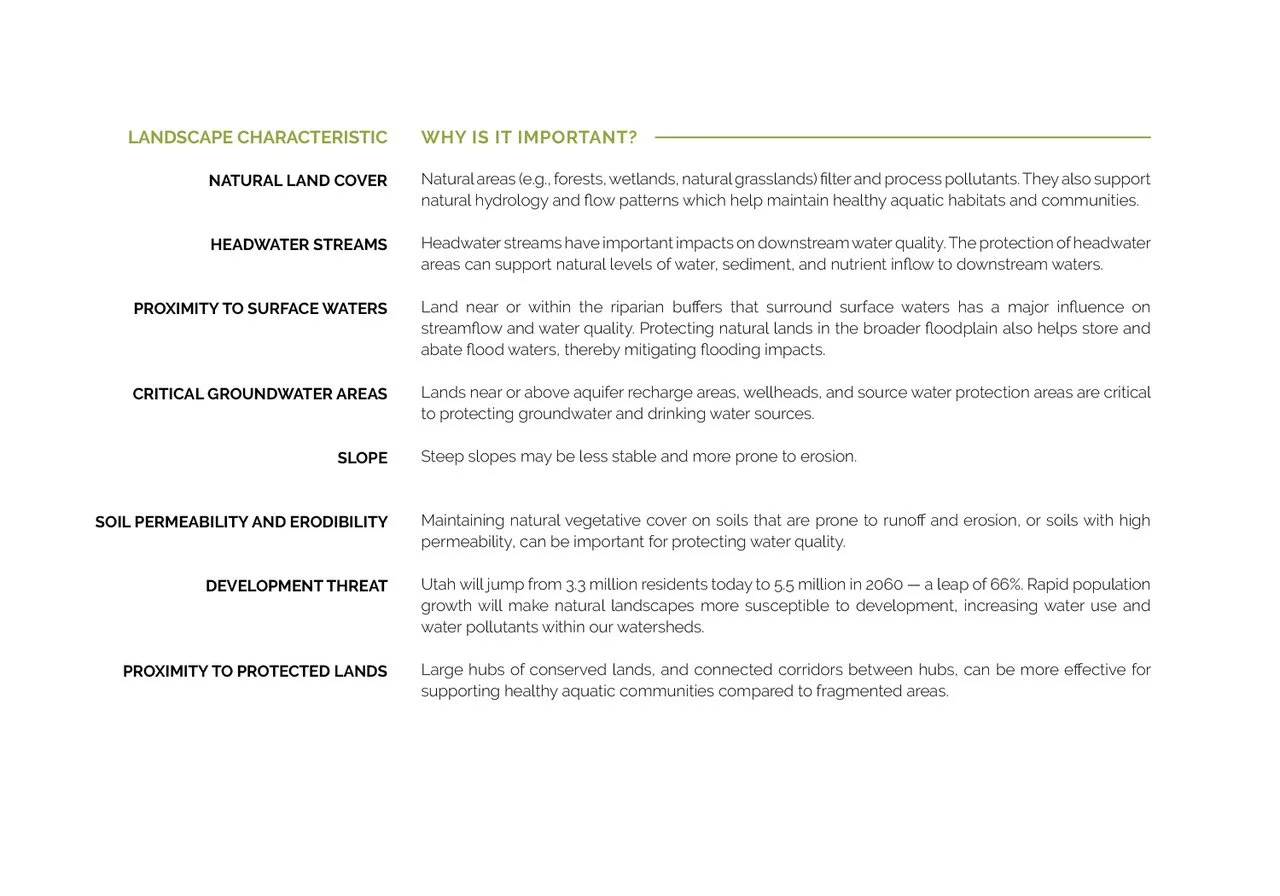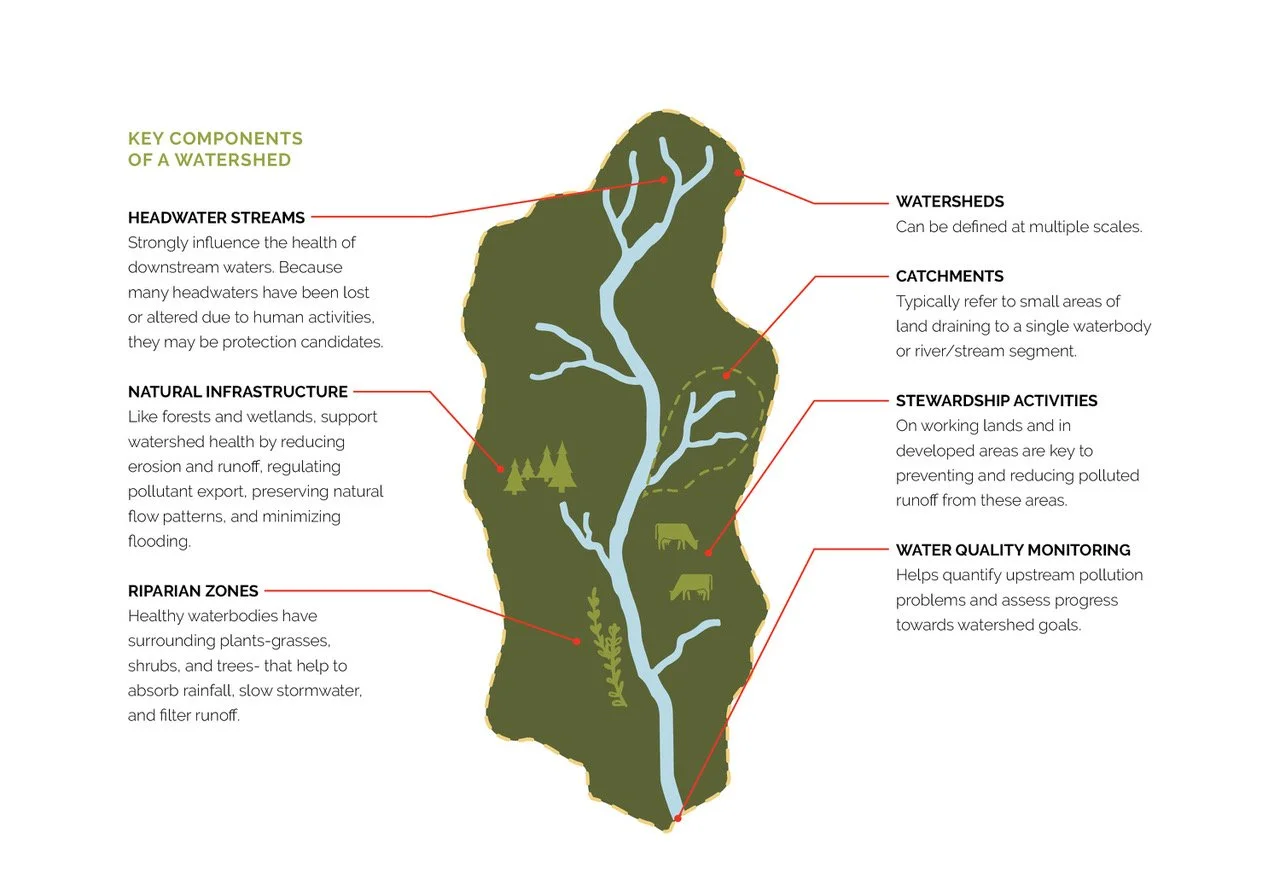Land conservation and watershed protection
Placing conservation easements on natural lands permanently protects our watersheds from destruction, growth, and high water consumption and use, ultimately directing water back into the Great Salt Lake.
The conservation of natural lands supports watershed protection by maintaining important elements of the water cycle such as groundwater recharge, and by minimizing the accumulation and runoff of pollutants. Conserving well-managed agricultural lands prevent conversion to alternative land uses such as development, that pose greater threats to water quality and quantity. Placing conservation easements on natural lands permanently protects our watersheds from destruction, growth and high water consumption and use, ultimately directing water back into the Great Salt Lake.
Because watersheds can cross political boundaries (e.g., county lines), utility service areas, or other administrative margins, watershed planning can involve many stakeholders including individuals like YOU. Our 23-million-acre watershed is divided into four main basins, with the Bear, Jordan, and Weber watersheds contributing almost all surface water inflow to the Great Salt Lake. It is up to us to take a stand to save and restore the lands that feed our watersheds and the Great Salt Lake.
The Summit Land Conservancy will work across political divides and find common ground.
SOURCE:United States Environmental Protection Agency, ADVANCING WATERSHED PROTECTION THROUGH LAND CONSERVATION A Guide for Land Trusts, June 2022



